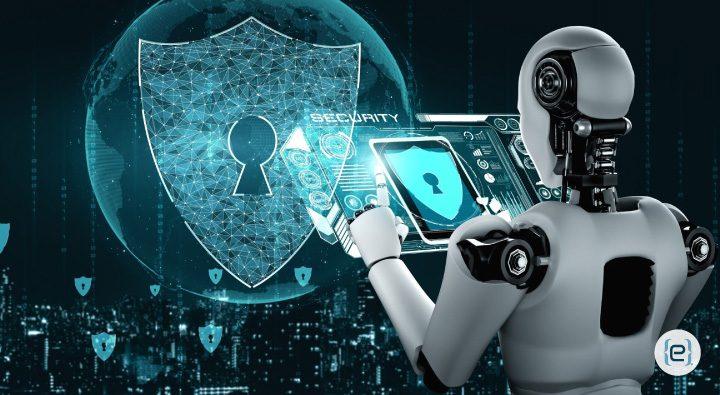AI Solutions for Cybersecurity: Outsmarting Threats with Intelligent Defense Systems

Cyber threats are evolving at an unprecedented pace. Traditional security measures, while still relevant, often struggle to keep up with sophisticated attacks like zero-day exploits, polymorphic malware, and state-sponsored cyber-espionage. This is where AI solutions have emerged as a game-changing force in cybersecurity.
By leveraging advanced machine learning, deep learning, and data analytics, AI-powered defense systems can detect anomalies, predict potential attacks, and automate rapid response measures all in real-time. The result? Stronger, smarter, and more adaptive cybersecurity strategies that can outsmart even the most cunning adversaries.
How AI Solutions Are Transforming Cybersecurity
The shift toward AI-driven cybersecurity is not just a trend it’s a necessity. Here are key ways in which AI solutions are reshaping the security landscape:
1. Proactive Threat Detection
Instead of relying solely on signature-based detection, AI uses behavioral analysis to identify unusual patterns. For example, if a user suddenly downloads gigabytes of sensitive data at 3 AM, an AI system can flag this activity as suspicious even if it doesn’t match any known attack profile.
2. Automated Incident Response
AI systems can execute real-time containment measures when threats are detected. This includes isolating affected devices, blocking malicious IPs, and triggering security protocols without waiting for human intervention.
3. Predictive Analytics for Future Threats
By analyzing massive datasets of past attacks, AI can forecast potential vulnerabilities and suggest preventive measures giving businesses a head start in fortifying defenses.
4. Enhanced Phishing Detection
AI-driven email filters can go beyond simple keyword spotting to understand linguistic cues, detect spoofed domains, and spot even the most convincing phishing attempts.
Intelligent Defense Systems in Action
1. Endpoint Protection with AI
Modern endpoint security platforms powered by AI solutions can detect advanced malware, block ransomware encryption processes, and stop zero-day attacks by monitoring real-time activity on devices.
2. Network Traffic Analysis
AI tools can scan terabytes of network data in seconds, identifying anomalies such as unauthorized data transfers or unusual access patterns tasks that would take human analysts hours or days.
3. User Behavior Analytics (UBA)
By profiling normal user behavior, AI can detect insider threats, compromised accounts, and even credential misuse with high accuracy.
Benefits of AI Solutions in Cybersecurity
|
Benefit |
Impact |
|
Faster Threat Detection |
Reduces detection time from hours to seconds. |
|
Reduced False Positives |
Minimizes unnecessary alerts, allowing analysts to focus on real threats. |
|
Adaptive Learning |
Improves accuracy over time as AI models learn from new attack patterns. |
|
24/7 Monitoring |
Continuous surveillance without human fatigue. |
|
Cost Efficiency |
Automates repetitive tasks, reducing reliance on large SOC teams. |
Challenges of AI in Cybersecurity
While AI solutions offer remarkable capabilities, they also present certain challenges:
-
Adversarial AI Attacks – Hackers are now creating AI-powered malware to evade detection.
-
Data Privacy Concerns – AI systems require large datasets, which may contain sensitive information.
-
Skill Gap – Implementing and managing AI-driven defense requires specialized talent.
-
Over-Reliance on Automation – Complete dependence on AI without human oversight can be risky.
Best Practices for Implementing AI-Powered Cybersecurity
-
Integrate AI with Existing Security Tools
AI should complement, not replace, traditional security systems. -
Invest in Quality Data
The effectiveness of AI solutions depends on the accuracy and relevance of training data. -
Maintain Human Oversight
Pair AI automation with expert analysts to validate and interpret findings. -
Conduct Regular Model Training
Keep AI models updated to adapt to emerging threats. -
Focus on Compliance
Ensure AI-driven processes adhere to cybersecurity regulations like GDPR, CCPA, and ISO 27001.
Future of AI in Cybersecurity
The next wave of AI innovation will focus on autonomous cyber defense systems capable of self-learning, self-healing, and dynamic threat counteraction. Generative AI could even simulate attack scenarios to preemptively identify and fix vulnerabilities before exploitation.
Organizations that invest early in robust AI solutions for cybersecurity will not only protect their assets but also build trust with customers and partners in an increasingly security-conscious market.
Final Thoughts
Cybersecurity in 2025 and beyond demands more than just reactive defense it requires intelligent, predictive, and automated protection. AI solutions empower businesses to detect threats earlier, respond faster, and adapt continuously.
For organizations aiming to stay ahead of cybercriminals, integrating AI into the security strategy is no longer optional; it's a competitive necessity.
FAQs
1. How does AI improve cybersecurity compared to traditional methods?
AI enhances cybersecurity by providing real-time monitoring, predictive threat analysis, and automated response capabilities, which are faster and more accurate than manual methods.
2. Are AI-powered security systems expensive to implement?
While initial costs can be higher, AI-driven systems often reduce long-term expenses by minimizing breaches and automating routine security tasks.
3. Can AI completely replace human cybersecurity analysts?
No. AI is best used as an augmentation tool, supporting analysts by handling repetitive tasks and identifying threats for human review.
4. What industries benefit most from AI cybersecurity solutions?
Industries with sensitive data such as finance, healthcare, government, and e-commerce see the most significant benefits from AI-driven defense systems.
5. How can my company get started with AI solutions for cybersecurity?
Start by conducting a security audit, identifying gaps, and partnering with an experienced AI service provider to integrate AI tools into your existing security infrastructure.








